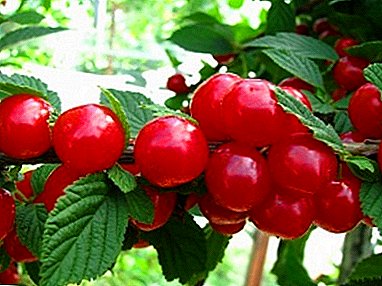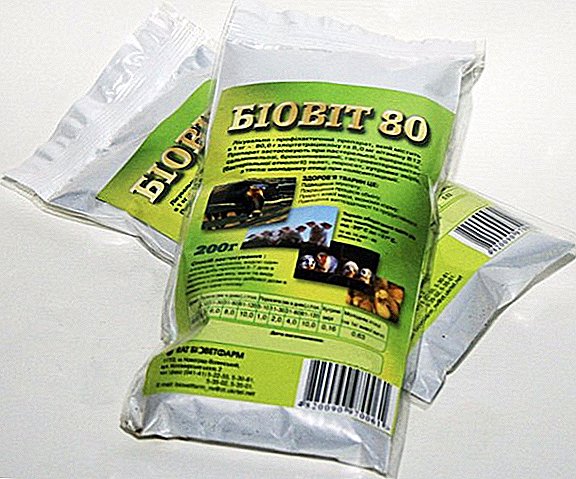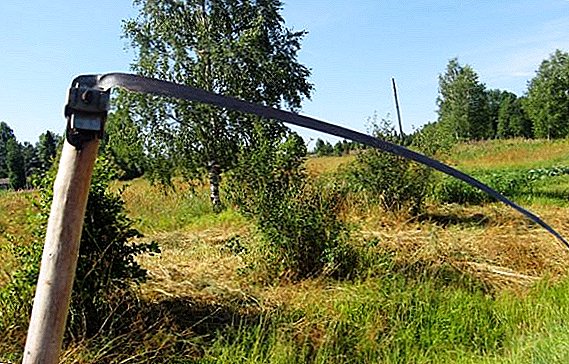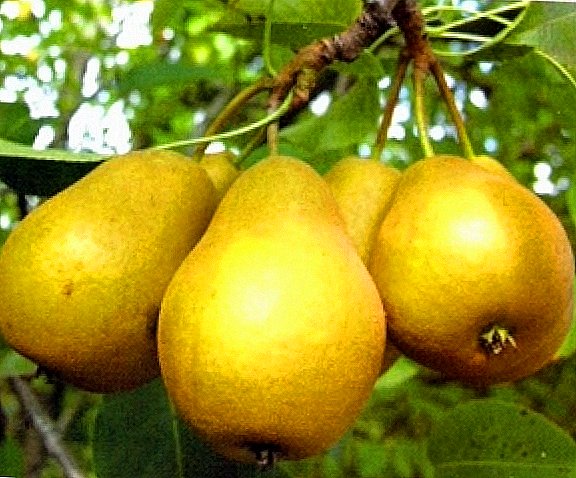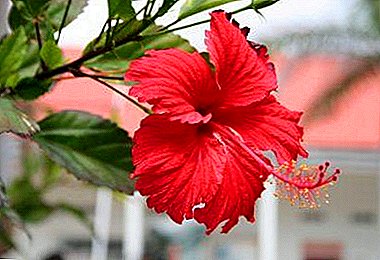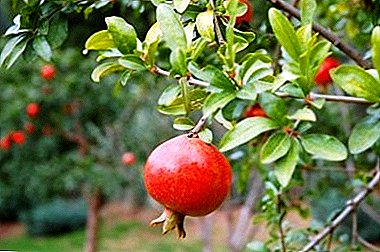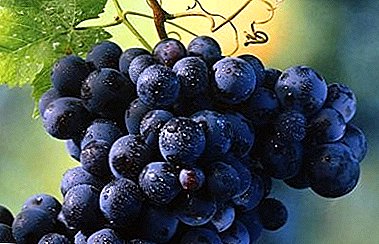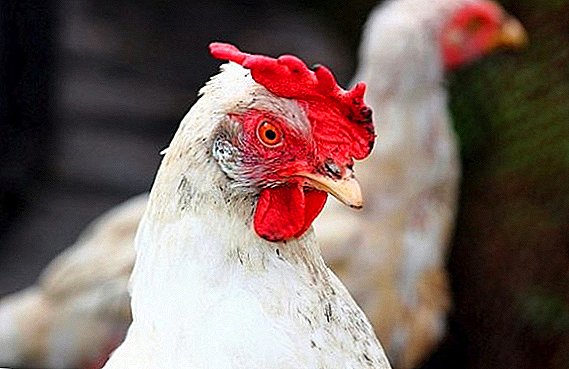 In many private courtyards there is some kind of wildlife. Very often they contain various chickens, from which they receive dietary meat and healthy eggs. One of the universal breeds is Pushkin chicken. When it was bred, scientists were able to achieve the perfect combination of good quality meat and egg production.
In many private courtyards there is some kind of wildlife. Very often they contain various chickens, from which they receive dietary meat and healthy eggs. One of the universal breeds is Pushkin chicken. When it was bred, scientists were able to achieve the perfect combination of good quality meat and egg production.
Inference history
30 years was spent by scientists of the Institute of Genetics in the city of Pushkin on the breeding of these chickens. The initial representatives were obtained by crossing motley Australorps with white leggorn, and had poor performance and weight.
Therefore, they were later crossed with representatives of Broiler-6, which ensured high meat qualities. However, these specimens had one drawback. They froze their high ridges during severe frosts.  It was decided to cross them with the Moscow white, as a result of which the breeding hens acquired a rose-like crest.
It was decided to cross them with the Moscow white, as a result of which the breeding hens acquired a rose-like crest.
The final version appeared and was registered only in 2007. From the ancestors, this chicken inherited high egg production and good body weight.
We recommend that you familiarize yourself with the decorative, fighting, meat, egg and egg breeds of chickens.
Characteristics and features of the breed
This is a very calm and unpretentious chickens, quite simple in content.
Appearance
Representatives of the Pushkin breed differ in such external characteristics:
- trapezoidal body;
- flat, tapering back to the tail, broad chest;
- long wings slightly down;
- highly raised tail;
- legs are long, have four fingers with claws of white color;
- an elongated head surmounted by a bright pink rose-colored comb with papillae on the upper part;
- a long neck is characterized by the presence of a mane;
- strongly curved beak of medium length and ivory;
- fluffy plumage has a white swelling.

Color
One of the characteristic features of the Pushkin hens is the variegated plumage. In males, more white, and in hens - black. There are also striped specimens. Roosters are very often pure white.
Read also how to choose a chicken coop for chickens or how to build a chicken coop for 20 chickens, how to heat a chicken coop in winter, how to make ventilation and roost for chickens with your own hands.
Character
This breed of hen is characterized by such traits in behavior:
- very calm and docile;
- get along well with any living creatures. Can be kept with other breeds of chickens;
- in case of danger, they do not run, but simply press themselves to the ground;
- very easy to handle;
- well understand the requirements of the owners;
- the rooster in the hen house is the main one and runs a “harem” of 20-25 hens;
- conflicts may arise between roosters (if there are not enough chickens per male).
Did you know? In the eighties, the American company made a proposal to use contact lenses for birds in red to reduce the aggressiveness of chickens. But this invention did not become popular due to the fact that the lenses caused chickens to lose sight.
Hatching instinct
Although Pushkin's laying hens and calm creatures, they do not sit down to incubate chickens, since one of their shortcomings is the loss of maternal instinct.
A bird may sit on a nest for several days, and then throw its offspring. But sometimes there are still rare exceptions, and then these hens make quite good hens. 
Productive qualities
We have already mentioned that these chickens combine the ability to produce tasty meat and a sufficient number of eggs.
Read also what vitamins to give chickens to increase egg production.
Egg production and when they begin to rush
Sexual maturity in chickens begins at the age of 5-6 months, at the same time the laying period begins. Egg production rates are quite high and are inferior only to egg breed chickens.
Under good conditions, females can produce up to 250-270 eggs per year (sometimes 300). If there is enough food and lighting, then the birds rush in the winter. In summer, eggs are laid almost daily.
A small break they can make during the molting period. The first eggs are small and weigh about 40 g, sometimes - 50 g.  Gradually, by the age of 7 months, the sizes become larger, and the weight reaches 65 g. After a year, the figures may increase to 75 g. Eggs have bright yolk and dense protein.
Gradually, by the age of 7 months, the sizes become larger, and the weight reaches 65 g. After a year, the figures may increase to 75 g. Eggs have bright yolk and dense protein.
The color of the shell is light, from white and yellowish to beige.
It will be useful for you to learn how to properly use an ovoscope, how to grow chickens in an incubator, why chickens do not carry or peck eggs, and why chickens cannot be kept in cages.
Precocity and taste of meat
The weight of representatives of the Pushkin breed is quite high. Chicken easily grows up to 2 kg, and the cock reaches 3 kg (sometimes 3.5 kg). For meat, mostly use extra cocks.
The carcass is easily plucked and does not leave black hemp on it. The skin is strong and light. Therefore, carcasses have a rather attractive presentation. The meat is very tasty, it turns into a rich broth.
Conditions of detention
Representatives of the Pushkin breed are not demanding of conditions. They feel comfortable even in the harsh climate.
Did you know? In South America, there are chickens that carry blue eggs. This is because they are infected with a virus that increases the amount of bile pigment in the shell. This does not affect the use and chemical characteristics of the product.
Coop Requirements
The bird winters easily in unheated chicken coops, but it must be insulated, without drafts and damp.
The roosts must be made at a low altitude, as these birds do not fly and if they descend from the high perch they risk damaging their feet. Therefore, they should be made no higher than 70-80 cm (in addition to ladders attached to them).  The floor in the house should be covered with peat, sawdust or straw. This litter retains heat in the coop in the winter.
The floor in the house should be covered with peat, sawdust or straw. This litter retains heat in the coop in the winter.
Courtyard for walking
These chickens do not fly, walk slowly, so there is no need to build paddocks for them with high fences and complex structures.
They will be quite enough open enclosures with awnings, where they can hide from the weather.
Important! Since these birds are very calm, slow and do not run away from danger, it is better not to let them out for free walking, but to keep them in a barred place. Well if it will be a fenced area with grass.
On the paddock, you must have a tank with sand and small gravel. It is necessary for swimming birds and eating (in order to improve digestion). 
How to endure the cold
When breeding Pushkin hens, much attention was paid to their resistance to low temperature. The presence of dense plumage with good down, long legs and a pinkish ridge allows the birds to endure rather severe cold.
Important! In chicken coops, the temperature should not fall below -5 degrees, because the chickens will stop rolling.
What to feed adult chickens
In order for the bird to rush well and have delicious meat, it must be properly fed. But since these birds are characterized by increased appetite and are prone to overeating, it is important to control the amount of food they eat, so that they do not become fat and do not cease to nest.
Chickens do not need any expensive feed. They have enough grain and the usual feed. You need to give wet food, but they should be eaten in about 40 minutes, so as not to soured.
Mixing different feeds allows the bird to get all the necessary substances. Also in her diet should be present:
- cereals and grains;
- fresh and boiled vegetables;
- meat and fish waste;
- dairy products (kefir or cottage cheese);
- bone flour;
- greenery;
- crushed shell.
To improve egg production and taste of meat should be given vitamins. To feed the chickens should be 2-4 times a day, so that they do not overeat, but do not go hungry.  You can use this mode:
You can use this mode:
- 6-7 am - the third part of the daily rate of cereals;
- 8-9 am - mash of boiled vegetables with bran;
- 12 hours - boiled vegetables;
- 18 hours - the rest of the volume of grain.
If there is no fenced grazing, then grass or hay can be hung in the walk. As vegetables, give zucchini, pumpkin or cabbage.
Important! Meat-yoy breeds give approximately 20% more feed than layers.
Breeding chicks
As we said earlier, these layers have lost their instinct for incubation. Therefore, breeding occurs by laying eggs in incubators. 
Egg Incubation
For this purpose, choose eggs of medium size, clean and even, without defects. Weight can be from 55 g to 70 g, but the larger the egg, the worse it will turn over in the incubator. Large eggs can be laid under the hen of other breeds.
Material for incubation before the bookmark is stored at a temperature of + 10-15 degrees for no more than 7 days. Hatchability rates are quite high (90-95%). This is due to the very good activity of roosters, which leads to high fertilization of eggs.
It will be useful for you to learn how to choose an incubator, as well as what features of the use of incubators "Cinderella", "Laying", "Blitz" and "Perfect hen".
Even eggs with two yolks are often fertilized, but they are not used for incubation.
Chicks hatch earlier than other breeds. This happens on the 19-20 day. There are more cockerels in the brood than chickens.
Care for the young
For these chickens care is the same as for other chicks. They do not require any special conditions, as well as are characterized by high endurance. The young hatch quickly and together.
Did you know? Chickens cannot hatch out of two yolk eggs only because they do not have enough space in one shell and they will not develop.
After they dry, they are given the first feed. Most often it is a boiled egg. Be sure to have fresh and clean water, as chickens often begin to drink earlier than they eat.
The young are as calm as the older members of the breed, so they do not need to make high barriers. With good weather, after a couple of weeks they begin to gradually accustom themselves to the street. They are not afraid of lowering the temperature and changing feed. 
Food intake kurchat
The chicks on the walk with appetite eat grass and various insects. Grow and gain weight quickly. According to the recommendations of farmers from compound feeds, chickens can be given starting for the broilers of the company “Purina” in the first weeks.
Two weeks later, they are transferred to the "Grower" for broilers. From one month they begin to teach KK for young animals.
In addition, from the first days chickens are given boiled eggs and millet. Gradually, greens, boiled potatoes, fish oil, meat and bone and fish meal are introduced into the diet.
Bone and fish meal is often used as organic fertilizer.
Herd replacement
One of the advantages of Pushkin's chickens is that they rush for 3-4 years. Therefore, it is not necessary to frequently change the herd, as is usually the case with representatives of egg breeds.
Advantages and disadvantages
Like all chickens, Pushkin has its advantages and disadvantages.
The benefits are much greater.:
- rapid growth and early maturity;
- undemanding conditions and feed;
- endurance at low temperatures;
- excellent presentation of carcasses;
- almost one hundred percent young hatching;
- high egg production and a long period of productivity;
- calm and harmless nature.
 The disadvantages of these birds include:
The disadvantages of these birds include:- inability to incubate chickens;
- high activity of roosters (this can be counted as a plus, since activity guarantees a high degree of fertility of eggs);
- increased appetite and tendency to overeating (fatty chicken stops nosing), so you need to control the amount of feed;
- inability to escape from danger.
Read also how a rooster fertilizes a hen.
Despite some shortcomings, birds of this breed are considered the best option for keeping in a private yard. Thirty years were spent by breeders for good reason. As a result, we have a universal bird carrying tasty and rather large eggs, as well as having excellent meat taste. At the same time easy to maintain and undemanding to the content. Get these chickens and see for yourself!


